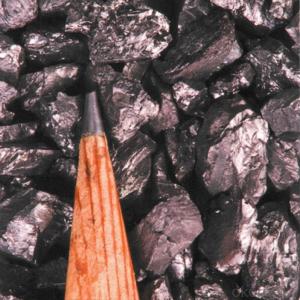Calcined Anthracite Coal Low Sulphur for Steelmaking
- Loading Port:
- Tianjin
- Payment Terms:
- TT or LC
- Min Order Qty:
- 20 m.t.
- Supply Capability:
- 10000 m.t./month
OKorder Service Pledge
OKorder Financial Service
You Might Also Like
Quick Details
Place of Origin: Ningxia, China (Mainland)
Application: steel making
Shape: granule
Dimensions: FC90-95%
Product Type: Carbon Additive
C Content (%): 90-95% MIN
Working Temperature: -
S Content (%): 0.5%MAX
N Content (%): -
H Content (%): 0.6%MAX
Ash Content (%): 8.5%MAX
Volatile: 2%MAX
ADVANTAGE: low ash & sulfur
COLOR: Black
RAW MATERIAL: TaiXi anthracite
Packaging & Delivery
| Packaging Details: | In 1MT plastic woven bag. |
|---|---|
| Delivery Detail: | 30-40DAYS |
Specifications Calcined Anthracite Coal Low Sulphur for Steelmaking Carbon Additve low Ash,S,P Structure Calcined Anthracite Coal Low Sulphur for Steelmaking Shape: granule Dimensions: FC90-95% Product Type: Carbon Additive C Content (%): 90-95% MIN Working Temperature: - S Content (%): 0.5%MAX N Content (%): - H Content (%): 0.6%MAX Ash Content (%): 8.5%MAX Volatile: 2%MAX ADVANTAGE: low ash & sulfur COLOR: Black RAW MATERIAL: TaiXi anthracite Feature Calcined Anthracite Coal Low Sulphur for Steelmaking Specifications (%): Grade F.C Ash V.M Moisture S Size CR-95 ≥95 <4 <1 <1 <0.3 0-30mm CR-94 ≥94 <4 <1 <1 <0.3 CR-93 ≥93 <6 <1 <1 <0.4 CR-92 ≥92 <7 <1 <1 <0.4 CR-91 ≥91 <8 <1 <1 <0.4 CR-90 ≥90 <8.5 <1.5 <2 <0.4 Image Calcined Anthracite Coal Low Sulphur for Steelmaking FAQ: Calcined Anthracite Coal Low Sulphur for Steelmaking Why we adopt carbon additive? Carbon Additives used as additive in steel making process. It made from well-selected Tai Xi anthracite which is low in content of ash, sulphur, phosphorus, high heat productivity, high chemically activation. Mainly industry property of it is: instead of traditional pertroleum coal of Carbon Additives, reduce the cost of steelmaking. Advantage: Calcined Anthracite Coal Low Sulphur for Steelmaking 1.High quality and competitive price. 2.Timely delivery. 3.If any item you like. Please contact us. Your sincere inquiries are typically answered within 24 hours.
FC>95% ASH<4% S<0.3%
It is made from TaiXi anthracite.
instead of pertrol coke reduce the cost
As buyer's request.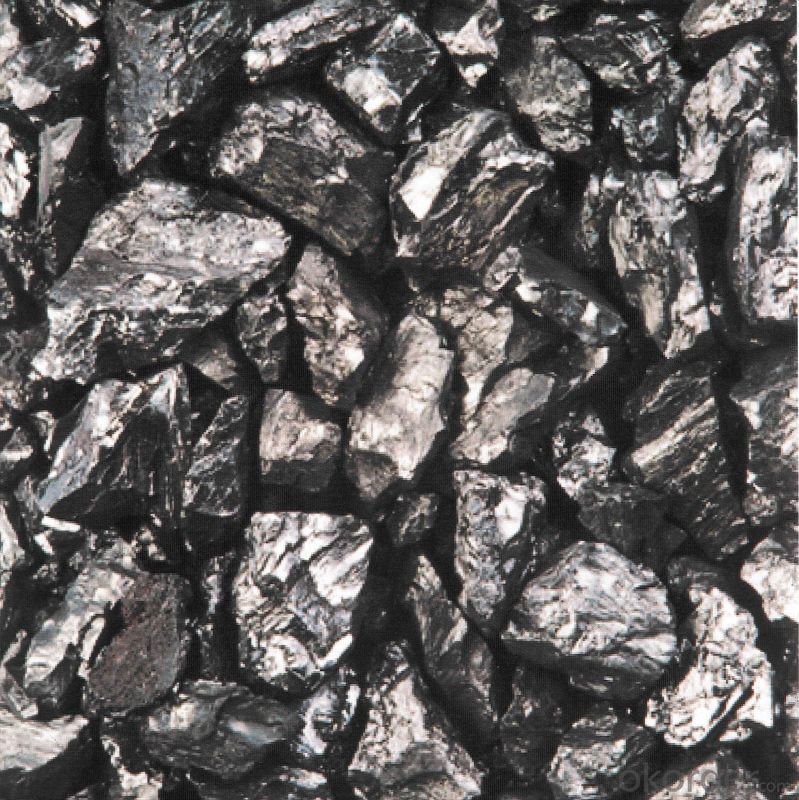
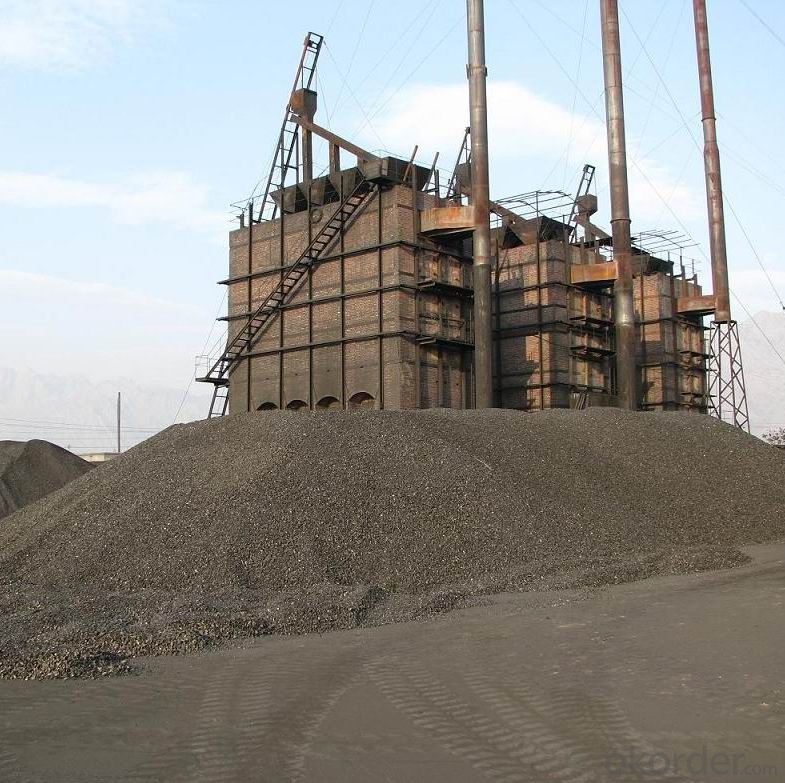
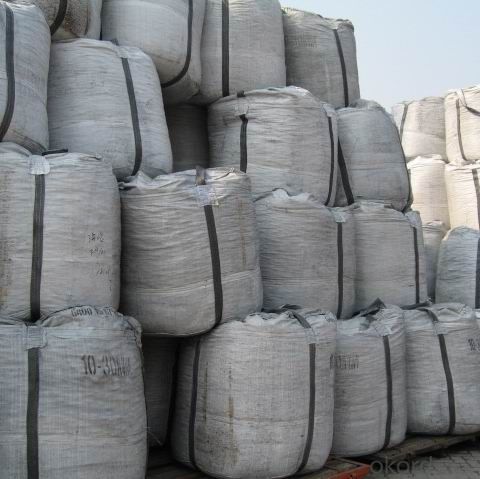

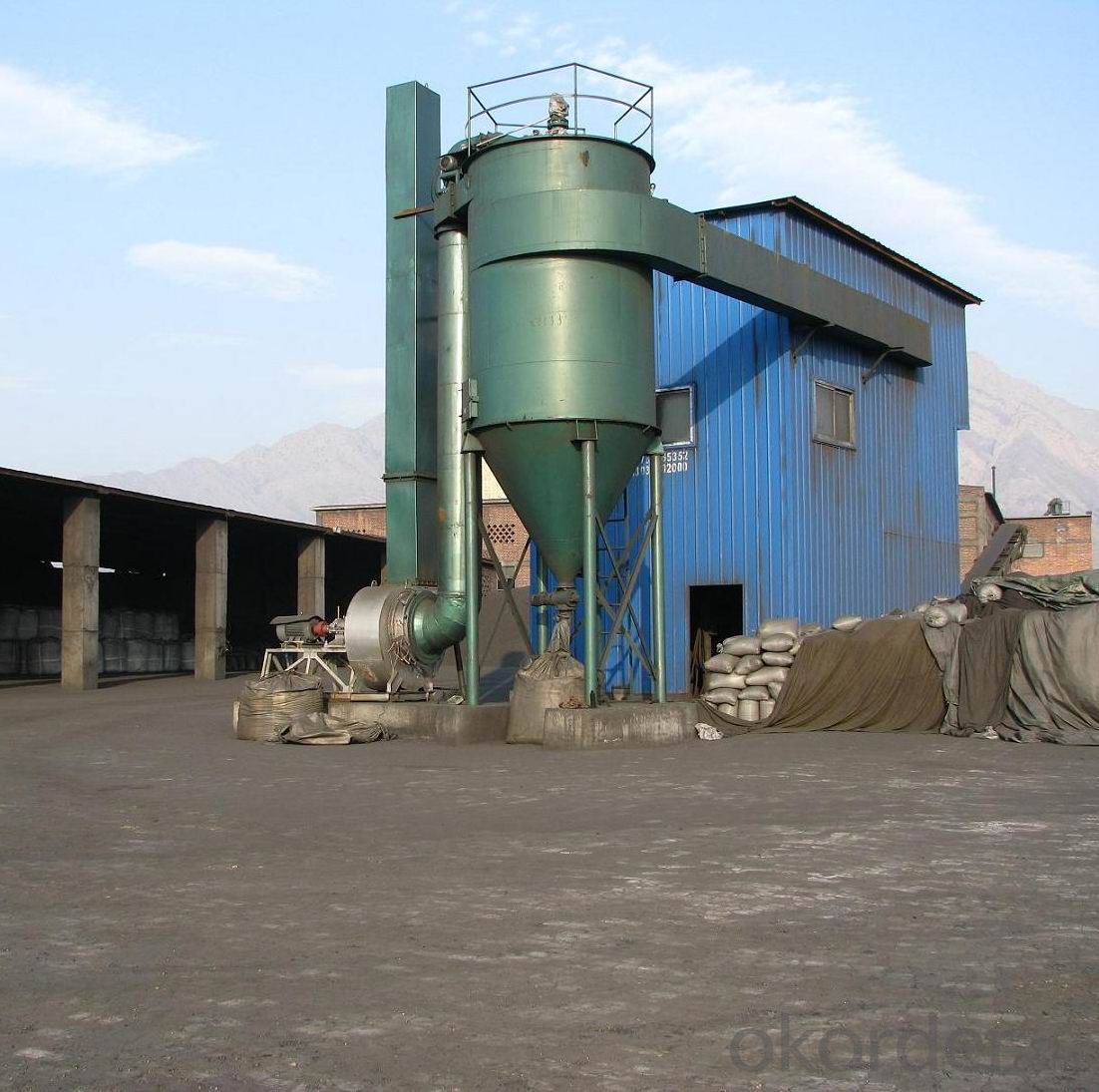
- Q:How does carbon contribute to the strength of concrete?
- Carbon can contribute to the strength of concrete in several ways. One of the primary ways is through the use of carbon nanotubes (CNTs) or carbon fibers. These materials are added to the concrete mixture, acting as reinforcement and enhancing its mechanical properties. When CNTs or carbon fibers are incorporated into the concrete, they create a network of small, strong, and lightweight particles. This network helps to improve the overall strength and durability of the concrete, making it more resistant to cracking, flexing, and other forms of structural damage. Additionally, the carbon particles also enhance the bonding between the cement paste and the aggregates in the concrete. This improved bonding increases the interfacial strength, resulting in a stronger and more cohesive concrete matrix. Furthermore, carbon can also contribute to the strength of concrete by acting as a pozzolan. Pozzolans are materials that react chemically with calcium hydroxide, a byproduct of cement hydration, to form additional cementitious compounds. These compounds fill in the gaps between cement particles, resulting in a denser and stronger concrete structure. Carbon black, a type of finely divided carbon, is commonly used as a pozzolan in concrete mixes. Overall, the incorporation of carbon in concrete, whether through carbon nanotubes, carbon fibers, or as a pozzolan, can significantly enhance its strength and performance. By reinforcing the concrete matrix, improving bonding, and filling in gaps, carbon helps to create a more durable and robust material suitable for various construction applications.
- Q:What are the limitations of carbon dating?
- Carbon dating, also known as radiocarbon dating, is a widely used method for determining the age of organic materials up to 50,000 years old. While it has revolutionized the field of archaeology and paleontology, it does have certain limitations that researchers must be aware of. One limitation of carbon dating is its inability to accurately date materials beyond the 50,000-year mark. This is due to the fact that carbon-14, the isotope used in carbon dating, has a half-life of only 5,730 years. As a result, after several half-lives, there is not enough carbon-14 remaining in a sample to accurately determine its age. Another limitation is the reliance on organic material. Carbon dating can only be used on organic materials such as bones, shells, wood, and charcoal. This means that it is not applicable to inorganic materials like rocks or minerals. Additionally, the presence of certain contaminants in the sample, such as humic acids or carbonates, can distort the carbon dating results. Furthermore, carbon dating is limited by the fact that it can only provide a relative age for the sample. It determines the ratio of carbon-14 to carbon-12 in the sample and compares it to the known ratio in the atmosphere. By assuming that the ratio has remained constant over time, an estimate of the sample's age can be made. However, variations in the atmospheric carbon-14 levels over time can affect the accuracy of this method. Additionally, carbon dating can be influenced by the presence of nuclear testing and other human activities that have released significant amounts of carbon-14 into the atmosphere. This is known as the "bomb effect" and can result in artificially younger dates for samples collected after the mid-20th century. Lastly, carbon dating can be limited by the size and condition of the sample. In order to obtain accurate results, a sufficient amount of organic material is required for analysis. This can be challenging when dealing with small or degraded samples, as the carbon-14 content may be insufficient or contaminated. In conclusion, while carbon dating is a valuable tool for determining the age of organic materials, it does have certain limitations. Researchers must consider these limitations and be cautious when interpreting the results, taking into account the age range, sample type, presence of contaminants, atmospheric variations, and sample size.
- Q:What is carbon steel, carbon manganese steel?
- Compared with other kinds of steel, carbon steel is the earliest, low cost, wide performance range and the largest amount. For nominal pressure PN is less than or equal to 32.0MPa, temperature of -30-425 water, steam, air, hydrogen, ammonia, nitrogen and petroleum products such as medium. Commonly used grades are WC1, WCB, ZG25 and high quality steel 20, 25, 30 and low-alloy structural steel 16Mn
- Q:What are the environmental impacts of carbon emissions from industries?
- The environmental impacts of carbon emissions from industries are significant and wide-ranging. Firstly, carbon emissions contribute to the greenhouse effect, which leads to global warming and climate change. The excessive release of carbon dioxide and other greenhouse gases into the atmosphere traps heat, causing the Earth's temperature to rise. This has resulted in the melting of polar ice caps, rising sea levels, and extreme weather events such as hurricanes and droughts. These changes disrupt ecosystems, lead to the loss of biodiversity, and threaten the survival of numerous species. Secondly, carbon emissions contribute to air pollution. Industries release not only carbon dioxide but also other harmful pollutants such as sulfur dioxide, nitrogen oxides, and particulate matter. These pollutants can have detrimental effects on human health, causing respiratory problems, cardiovascular diseases, and even premature death. In addition, they contribute to the formation of smog and acid rain, which further damage ecosystems and harm plant and animal life. Moreover, carbon emissions from industries have a negative impact on water systems. When carbon dioxide dissolves in water, it forms carbonic acid, leading to a decrease in pH levels and making the water more acidic. This acidification harms marine life, particularly organisms with shells or skeletons made of calcium carbonate, such as coral reefs, shellfish, and plankton. The disruption of marine ecosystems can have cascading effects on other species and disrupt the food chain. Lastly, carbon emissions contribute to deforestation and habitat destruction. Industries often rely on fossil fuels for energy, which leads to the clearing of forests to make way for mining or drilling operations. This destruction of natural habitats not only reduces biodiversity but also releases stored carbon from trees into the atmosphere, exacerbating the carbon emissions problem. To mitigate these environmental impacts, industries must prioritize the reduction of carbon emissions. This can be achieved through adopting cleaner and more sustainable energy sources, implementing energy-efficient technologies, and implementing stricter regulations and policies. Transitioning to renewable energy, improving industrial processes, and investing in carbon capture and storage technologies are essential steps towards mitigating the environmental impacts of carbon emissions from industries.
- Q:How does carbon dioxide contribute to global warming?
- Carbon dioxide contributes to global warming primarily through the greenhouse effect. When released into the atmosphere from various human activities such as burning fossil fuels and deforestation, carbon dioxide acts as a greenhouse gas. It traps heat within the Earth's atmosphere, preventing it from escaping back into space. This results in the overall increase in temperature on the planet, leading to global warming and its associated consequences such as rising sea levels, extreme weather events, and the disruption of ecosystems.
- Q:Advantages of carbon fiber
- The specific strength and specific modulus of the composite formed with resin are about 3 times higher than that of steel and aluminum alloy. Carbon fiber composites can be used in space, missile and sports equipment to reduce weight, improve payload and improve performance. They are important structural materials in aerospace industry.
- Q:Is badminton all good as carbon or aluminum carbon? Does carbon fiber on the Internet mean total carbon?
- Products using what material is an important factor to determine its price under the table, can let you understand the properties of several materials and approximate cost: the hardness of the material strength shock probably cost RMB $/KG high strength carbon fiber carbon fiber (HighModulusGraphite) 874157 (Graphite/ Carbon) 58445 (Aluminum) 24115 Aluminum Alloy wood (wood) 11104 must pay attention to in the choice of the racket, don't put the whole aluminum frame carbon rod racket mistaken for full carbon badminton racket. General note the label on the racket, should be able to distinguish, if not sure, I have three methods that can be used, one hand touch frame Aluminum Alloy good thermal conductivity due to the frame model is cool and the carbon frame is warm. But look at the groove on the racket frame, the aluminum frame is concave inside the shallow arc, and the carbon frame is an inner concave trapezoid. Three is to feel the weight, the aluminum frame's racket head is obviously biased. As the transition from aluminum frame to full carbon product, I feel that the price is high and the performance is low, it is not a good choice.
- Q:What are the implications of melting permafrost on carbon emissions?
- The melting of permafrost has significant and concerning implications for carbon emissions. Permafrost, which is permanently frozen ground found in cold regions, consists of soil, rocks, and organic matter. It acts as a large carbon sink, storing vast amounts of organic material, such as dead plants and animals, which have been frozen for thousands of years. However, as global temperatures rise, permafrost is thawing at an alarming rate, which could potentially release this stored carbon into the atmosphere. When permafrost thaws, the organic matter contained within it decomposes, releasing greenhouse gases, particularly carbon dioxide (CO2) and methane (CH4), into the atmosphere. Methane is an extremely potent greenhouse gas, with a global warming potential over 25 times greater than that of CO2 over a 100-year period. The release of these gases further contributes to climate change, exacerbating the already accelerating warming trend. The implications of melting permafrost on carbon emissions are twofold. Firstly, the release of large amounts of CO2 and methane from thawing permafrost can significantly amplify the greenhouse effect, leading to more rapid and intense climate change. This can create a feedback loop, where increased warming causes more permafrost thawing, releasing more carbon, and further accelerating global warming. Secondly, the release of carbon from permafrost also affects global carbon budgets and efforts to mitigate climate change. The amount of stored carbon in permafrost is estimated to be twice as much as what is currently present in the Earth's atmosphere. As this carbon is released, it adds to overall carbon emissions, making it more challenging to achieve emission reduction targets outlined in international agreements, such as the Paris Agreement. It also means that efforts to limit global warming to well below 2 degrees Celsius above pre-industrial levels become even more crucial. Moreover, the release of carbon from permafrost also has implications for local ecosystems and communities. Thawing permafrost can lead to the destabilization of infrastructure, including buildings, roads, and pipelines, as well as disrupt traditional livelihoods, such as hunting and reindeer herding. It can also cause land subsidence and increased coastal erosion, posing threats to coastal communities and biodiversity. In conclusion, the implications of melting permafrost on carbon emissions are extensive. It not only exacerbates climate change by releasing potent greenhouse gases into the atmosphere but also hinders global efforts to mitigate carbon emissions. Taking sustainable actions to reduce greenhouse gas emissions and protect permafrost ecosystems are vital to minimize these implications and safeguard the future of our planet.
- Q:What are the different types of carbon steel?
- Carbon steel is a versatile and widely used material in various industries due to its strength, durability, and affordability. There are several different types of carbon steel, each with its own unique properties and applications. 1. Low Carbon Steel: This type of carbon steel contains a low amount of carbon, typically up to 0.25%. It is the most commonly used form of carbon steel due to its ease of fabrication, weldability, and affordability. Low carbon steel is used in applications such as construction, automotive manufacturing, and general engineering. 2. Medium Carbon Steel: With a carbon content ranging between 0.25% and 0.60%, medium carbon steel offers increased strength and hardness compared to low carbon steel. It is commonly used in machinery parts, axles, gears, and shafts that require higher levels of toughness and wear resistance. 3. High Carbon Steel: High carbon steel contains a carbon content of 0.60% to 1.00%. It has excellent strength and hardness but is less ductile and more brittle compared to low and medium carbon steels. High carbon steel is commonly used in applications such as cutting tools, springs, and high-strength wires. 4. Ultra-High Carbon Steel: This type of carbon steel contains a carbon content greater than 1.00%, typically ranging from 1.20% to 2.50%. It possesses extremely high hardness and is often used in specialized applications such as knives, blades, and tools that require exceptional sharpness and wear resistance. 5. Carbon Tool Steel: Carbon tool steel refers to a group of steels that contain additional alloying elements such as chromium, vanadium, or tungsten. These alloying elements enhance the steel's hardness, wear resistance, and heat resistance, making it suitable for tool and die making, cutting tools, and molds. It is important to note that the carbon content of steel determines its strength, hardness, and other properties. The choice of carbon steel type depends on the specific application, desired characteristics, and manufacturing requirements.
- Q:How does carbon affect water quality?
- Carbon can affect water quality by altering its pH level and reducing its oxygen content. Additionally, carbon can react with other chemicals present in water to form harmful compounds, compromising its overall quality and making it unsuitable for consumption and aquatic life.
1. Manufacturer Overview |
|
|---|---|
| Location | |
| Year Established | |
| Annual Output Value | |
| Main Markets | |
| Company Certifications | |
2. Manufacturer Certificates |
|
|---|---|
| a) Certification Name | |
| Range | |
| Reference | |
| Validity Period | |
3. Manufacturer Capability |
|
|---|---|
| a)Trade Capacity | |
| Nearest Port | |
| Export Percentage | |
| No.of Employees in Trade Department | |
| Language Spoken: | |
| b)Factory Information | |
| Factory Size: | |
| No. of Production Lines | |
| Contract Manufacturing | |
| Product Price Range | |
Send your message to us
Calcined Anthracite Coal Low Sulphur for Steelmaking
- Loading Port:
- Tianjin
- Payment Terms:
- TT or LC
- Min Order Qty:
- 20 m.t.
- Supply Capability:
- 10000 m.t./month
OKorder Service Pledge
OKorder Financial Service
Similar products
New products
Hot products
Hot Searches
Related keywords
